TYPE DESIGN INFORMATION PAGE last updated on Thu Jan 1 10:04:55 EST 2026
FONT RECOGNITION VIA FONT MOOSE
|
|
|
|
|
Hong Kong font scene | ||
|
|
|
|
SWITCH TO INDEX FILE
| |
Hong Kong-based art director. Designer of the elephant-themed Haathi (2014). [Google] [More] ⦿ | |
Raised in Hong Kong and a resident of The Philippines, Aceler Chua designed the Farro sans typeface family in 2017 for his company, Grayscale. Link at Typedrawers. In 2019, he released the free Google web font Farro. Github link. He writes: Farro is an artsy, four-weighted, display typeface that has a peculiar personality flowing through its European humanist silhouette. Fontown link. [Google] [More] ⦿ | |
Cofounder with Gregor Vand in 2015 of Brand Craft. Hong Kong-based designer of the free beveled vector format typeface Brighton Sans (2018). [Google] [More] ⦿ | |
| |
Hong Kong-based type designer whose Japanese / Chinese typeface Geometrika (2013) won an award in the kanji category at the Morisawa Type Design Competition 2014. [Google] [More] ⦿ | |
Hong-Kong-based designer of Half Type (2012). Behance link. [Google] [More] ⦿ | |
As a student in Hong Kong, Ananya Mohan created Marker (2015). [Google] [More] ⦿ | |
Graphic designer in Stanley Village, Hong Kong, who created a display font in 2012. [Google] [More] ⦿ | |
Winner of an award at the Type Directors Club's Type Design Competition 2019 for Chek Lap Sans, which won an award at the Type Directors Club's Type Design Competition 2019. Chek Lap sans was developed at the School of Design of The Hong Kong Polytechnic University. Angel wrote: Chek Lap Sans is a Traditional Chinese typeface designed specifically for signage of the Hong Kong International Airport in Chek Lap Kok, aiming for both functionality and personality. The typeface is designed with considerations of legibility under negative polarity display, to suit the need of the current blue light-box signs with white text. It has generous negative spaces within character, optical adjustments to compensate the glowing effect, and subtle features that contribute to its visual identity. It also includes relevant icons with references to the local context. Several design decisions were informed by the findings from user tests. Her graduation typeface at the University of Reading was Tabloid (2019), which was designed for reading online material on screens. There are five styles covering three scripts (Latin, Traditional Chinese, Arabic). [Google] [More] ⦿ | |
| |
Archetype
| Archetype is a digital type foundry based in Hong Kong. Its commercial fonts include Axit-Type, Eletro-Type, Geo-Type, Matrix-Type, Quadra-Type, Techno-Type, 6ixbaby (katakana), Aerobaby, Atticbaby, Chinesebaby, Saintbaby, Slimbaby. Several of these are pixel and techno fonts. Stunning web pages. The type founders are John Wu and Stephen Tsim. [Google] [More] ⦿ |
Hong Kong-based designer of Ashler Sans (2015). Behance link. [Google] [More] ⦿ | |
Report by Luc Devroye. [Google] [More] ⦿ | |
As a student at Wheaton College, Hong Kong-based Benedict Leung designed Galactico (2017) and Fish Of The Reef Icon Set (2017). [Google] [More] ⦿ | |
Hong Kong-based graphic designer who created a Chinese typeface in 2012 that is based on the Latin typeface Krungthep. Behance link. [Google] [More] ⦿ | |
Hong Kong-based designer of the high-contrast display typeface Boni (2015), which was developed during her studies at SCAD Hong Kong. [Google] [More] ⦿ | |
During her studies at Savannah College of Art and Design, Bonnie Wong (Hong Kong) created the decorative caps typeface MyType (2014). [Google] [More] ⦿ | |
Hong Kong-based designer of Welkin Regular (2014), a retro script typeface developed at SCAD. [Google] [More] ⦿ | |
Hong Kong-based designer who made the modular paper fold typeface Ribbon (2015). [Google] [More] ⦿ | |
In 2016, Kwok worked with the Apple Inc. Type Team where he contributed to the design and development of Latin and East Asian scripts. In 2019, he joined Sharp Type specializing in multilingual type design, lettering, and typography. In 2018, he published the slab serif Urushi at Future Fonts and wrote: Urushi is the first Future Fonts release aiming to support Japanese Kana and Kanji, and Chinese Hanzi. This charming and slabby, reverse contrast is inspired by old Hong Kong movie magazines. His all caps titling typeface Mosses Serif (2018) was designed for the bookstore Mosses. Still in 2018, he was working on the Japanese typeface Tottori. [Google] [More] ⦿ | |
Portuguese designer (b. 1986) who is based in Macau. Creator of the free script typeface Bettencourt (2012). Her display typeface Radius (2013) is also free. Behance link. Dafont link. [Google] [More] ⦿ | |
"CERG_Chinese_Font" (2003, DynaComware Corp) is a free font downloadable at CERG, part of the Hong Kong Research Grants Council. It has over 36,000 glyphs (!) and covers nearly every language, including, most importantly, Chinese. [Google] [More] ⦿ | |
At the Chinese University of Hong Kong: ICS1 (2003), ICS2 (2003), ICS3 (2003), ICS4 (2003), ICS5 (2003), ICS6 (2003), and ICS7 (2003), all copyright of CHANT, ICS, CUHK. These fonts have ancient symbols that are at the origin of various Chinese writing systems. We also find information about the ancient Chinese scripts covering Jiaguwen, Jianbo, Jinwen, Pre-Han, Han, the six dynasties, and Leishu. [Google] [More] ⦿ | |
Tsui is a graphic designer born and raised in Hong Kong who recently received her BFA in communication design from Carnegie-Mellon University. She spent a term at the Type @ Cooper program in 2012, where she designed the italic typeface Eikon. [Google] [More] ⦿ | |
Hong Kong-based type designer who co-designed the 5-style sans family HF HySans in 2020 with Jiying Lee at HyFont Studio. In 2021, Tsau released the 5-style monospaced typeface HF Monorita (2021). [Google] [MyFonts] [More] ⦿ | |
China Type Designs Ltd.
| Foundry based in Hong Kong, est. 1986. In September 2006, Monotype Imaging acquired China Type Design Limited. At that time, Ricky Chun was China Type's managing director. Monotype writes: China Type has been a long-time partner of Monotype Imaging, which previously held 20 percent ownership of the firm. Over a 20-year period, the companies have collaborated on a wide range of Asian font projects, with recent work involving typefaces for Hewlett-Packard XHTML-based inkjet printers shipping in Japan and China, and East Asian fonts for the Microsoft Windows Vista operating system. [...] A recent collaboration involved the design and development of the Microsoft JhengHei typeface, a Traditional Chinese, OpenType-based typeface family, optimized with Microsoft's ClearType subpixel rendering technology for use in the Vista operating system. [...] China Type and Monotype Imaging have also recently completed work on a patent-pending technology involved in the ability to display scalable Simplified Chinese characters at small sizes (down to 14 pixels per em) with exceptional clarity on cell phones. The technology is available with the iType 3.0 font engine, the newest version of Monotype Imagings font rasterizer that enables the rapid display of scalable characters on memory-constrained devices. [...] As part of the China Type acquisition, Monotype Imaging has secured an exclusive relationship with Creative Calligraphy Center (CCC), a font production company in Zhuhai, China, with 30 production specialists. Ricky Chun began his career at China Type in 1992 as a developer of PostScript-compatible font programs and in-house production tools. Since then, Chun has held positions in sales, marketing, technical support and product development. Chun has worked with Monotype Imaging on various type production and development projects. Chun earned a masters degree in Australia. Linotype link where these fonts are sold: M Bei HK, M Bitmap Round HK, M Bitmap Square HK, M Comic HK, M Comic HKS, M Cute HK, M Cute HKS, M Dynasty HKS, M Dynasty HK, M Ellan HKS, M Ellan HK, M Elle HK, M Elle HKS, C Fang Song HKS, C Fang Song HK, M Gentle HK, M Gentle HKS, C Gu Li HK, C Gu Li HKS, C Gu Yin HK, C Gu Yin HKS, MHG Hagoromo T HK, C Hei HK, C Hei 2 HK, C Hei 3 HK, C Hei 3 HKS, M Hei HK, M Hei HKS, C Hei HKS, C Hei 2 HKS, M Hei Sung HKS, M Hei Sung HK, M Kai HK, M Kai HKS, C Kan HK, C Kan HKS, MHG Kyokashotai T HK, M Lady HK, M Lady HKS, CX Li HK, CX Li HKS, M Li HK, M Li HKS, M Ling Wai FHK, M Ling Wai P HK, M Marker HK, M Marker HKS, M Metallic Hei HKS, M Metallic Hei HK, CJ Ngai HK, CJ Ngai HKS, M Ngai HKS, M Ngai HK, C Ngan Kai HKS, C Ngan Kai HK, C Po 3 HK, C Po 3 HKS, C Po HK, C Po HKS, M Qing Hua HKS, M Qing Hua HK, M Razor HKS, M Razor HK, MHG Reithic T HK, C Song 3 HK, C Song 3 HKS, M Stiff Hei HKS, M Stiff Hei HK, M Stream HK, M Stream HKS, C Su HK, C Su HKS, M Sung Gold HKS, M Sung Gold HK, M Sung HK, M Sung HKS, C Wei Bei HKS, M Windy HK, M Windy HKS, C Xing HK, C Xing HKS, C Xing Kai HKS, C Xing Kai HK, CX Yao HKS, M Young HK, M Young HKS, M Yuen HKS, M Yuen HK, M Yuen, CO Yuen HKS, C Yuen HK, C Yuen, CO Yuen HK, CO Yuen, C Yuen 2 HKS, CO2 Yuen HKS, CO2 Yuen HK, C Yuen GB, C Yuen T GB, CO Yuen T GB, C Yuen GB5, CO Yuen GB5, M Yuppy HK, M Yuppy HKS. Here the S in HKS stands for simplified. The list of fonts now sold by Monotype: C Fang Song GB, C Fang Song HK, C Fang Song PRC, C Gu Li GB, C Gu Li PRC, C Gu Yin PRC, C Hei 2 GB, C Hei 2 HK, C Hei 2 PRC, C Hei 3 GB, C Hei 3 HK, C Hei 3 PRC, C Hei HK, C Hei PRC, C J Ngai GB, C J Ngai HK, C J Ngai PRC, C Kan PRC, C Ngan Kai PRC, C O 2 Yuen HK, C O 2 Yuen PRC, C O Hei GB, C O Hei PRC, C O Yuen GB, C O Yuen HK, C O Yuen PRC, C Po 3 HK, C Po 3 PRC, C Po HK, C Po PRC, C Song 3 PRC, C Su GB, C Su PRC, C Wei Bei PRC, C X Li HK, C X Li PRC, C X Yao PRC, C Xing Kai GB, C Xing Kai PRC, C Xing PRC, C Yuen 2 PRC, C Yuen GB, C Yuen HK, M Banquet P HK, M Banquet P PRC, M Bei HK, M Bitmap Square HK, M Circus HK, M Circus PRC, M Comic HK, M Comic PRC, M Computer PRC, M Curvy HK, M Curvy PRC, M Cute HK, M Cute PRC, M Dynasty HK, M Dynasty PRC, M Ellan HK, M Ellan PRC, M Elle HK, M Elle PRC, M Felt Pen HK, M Felt Pen PRC, M Finance HK, M Finance PRC, M Gentle HK, M Gentle PRC, M Gothic Gold HK, M Gothic Gold PRC, M Hei HK, M Hei PRC, M Hei Sung HK, M Hei Sung PRC, M HG Hagoromo T HK, M HG Kyokashotai T HK, M HG Reithic T HK, M J Ngai HK, M J Ngai PRC, M Kai 2 HK, M Kai 2 PRC, M Kai HK, M Kai PRC, M Lady HK, M Lady PRC, M Lava HK, M Lava PRC, M Li PRC, M Ling Wai HK, M Ling Wai PRC, M Marker PRC, M Metallic Hei HK, M Metallic Hei PRC, M Ngai HK, M Ngai PRC, M Qing Hua HK, M Qing Hua PRC, M Razor PRC, M Smart PRC, M Stiff Hei HK, M Stiff Hei PRC, M Stream HK, M Stream PRC, M Sung GB, M Sung Gold PRC, M Sung PRC, M Windy HK, M Windy PRC, M Ying Hei HK, M Ying Hei PRC, M Young Hei HK, M Young Hei PRC, M Young PRC, M Yoyo HK, M Yoyo PRC, M Yuen PRC, M Yuppy HK, M Yuppy PRC, M Zhi Hei HK, M Zhi Hei PRC, M Zhi Ngai HK, M Zhi Ngaio PRC. [Google] [More] ⦿ |
Designer at the City University of Hong Kong of the phonetic font DOCIPA (1993) designed for the Dialects of China (DOC) database. [Google] [More] ⦿ | |
Download the free Chinese font family Chiron Sans HK (+Pro, +Companion) developed between 2014 and 2020. These are based on Source Han Sans. [Google] [More] ⦿ | |
| |
During her studies at Hong Kong Baptist University, CoeYin Lau designed the bilined Latin typeface CLLY (2019). [Google] [More] ⦿ | |
CUHK
| A free phonetic font at CUHK (Chinese University of Hong Kong) called Handkey2002. The web site belongs to Professor Gladys Tang. [Google] [More] ⦿ |
Chinese font archive in Hong-Kong. Alternate URL. Included are BitstreamCyberCJK-Roman (1990-1998), a nearly full Unicode font, the NTU family (which comprises NTU_FS_M, NTU_KAI, NTU_LI_M, NTU_MB, NTU_MM, NTU_MR, NTU_TW), Siddam, TSC-FMing-S-TT, TSC-JSong-S-TT (both from Twinbridge Software), CWTEX-BB, CWTEX-F, CWTEX-K, CWTEX-M, CWTEX-R (all by Tsong-Min Wu, Tsong-Huey Wu and Wang Ming-Ter, 1999-2002), and the wcl family. In the Unicode subpage, we find the HZK series. Alternate URL. Another URL. [Google] [More] ⦿ | |
CYanHeiHK is an OpenType font based on Source Han Sans (SHS) from Adobe and Google (it is called Noto Sans CJK when distributed by Google). A number of glyphs have been modified so that it is more suitable for use in Hong Kong. Note: Source Han Sans / Noto Sans CJK were originally designed by Ryoko Nishizuka (kana & ideographs), Paul D. Hunt (Latin, Greek & Cyrillic), Wenlong Zhang (bopomofo), Sandoll Communication, Soo-young Jang and Joo-yeon Kang (Hangul elements, letters & syllables). [Google] [More] ⦿ | |
CYMingHK is an OpenType font based on Source Han Serif from Adobe and Google (it is called Noto Serif CJK when distributed by Google). A number of glyphs have been modified so that it is more suitable for use in Hong Kong. Note: Source Han Serif / Noto Sans CJK were originally designed by Ryoko Nishizuka (kana & ideographs), Paul D. Hunt (Latin, Greek & Cyrillic), Wenlong Zhang (bopomofo), Sandoll Communication, Soo-young Jang and Joo-yeon Kang (Hangul elements, letters & syllables). [Google] [More] ⦿ | |
Hong Kong-based designer of Destruction Type (2005). [Google] [More] ⦿ | |
Danielle Huthart
| |
DEMO Company
|
|
Hong-Kong-based designer of Aerofoil (2007, calligraphic script), Ampersand (2005, hand-printed) and Cataclysmic (2005, handwriting). Alternate URL. Yet another URL. She used Fontifier to create a handwriting face, Skribble (2004). See also here. Alternate URL. Klingspor link. Dafont link. [Google] [More] ⦿ | |
Born in Hong Kong in 1968, Dennis Poon was a designer in San Francisco and Stockholm. He currently works at Philips in Singapore. At the Typebox foundry, he designed TxElf (2002, blockish almost-bitmap font), TX Hex (2002) and TX Gitter (2001, a simplified Codex-like face). FontShop link. Klingspor link. [Google] [MyFonts] [More] ⦿ | |
During his studies at The Hong Kong Polytechnic University School of Design, Derek Lee (Kwun Tong, Hong Kong) created an origami typeface for Chinese (2013). [Google] [More] ⦿ | |
Kowloon, Hong Kong-based designer of Robo (2012, dot matrix typeface). [Google] [More] ⦿ | |
| |
During his studies in Hong Kong in 2017, Eric Coke designed the display typeface Mitosis (2017). [Google] [More] ⦿ | |
Hong Kong-based designer of the text typeface Angel Hair (2013), which was developed at SCAD. [Google] [More] ⦿ | |
| |
Fontever
| A font market place launched in 2014 by Joe Chau (Hong Kong). It sells full rights (at a few thousand dollars a pop) to unique typefaces. The first typeface is Queenamor by Joe Chau (2014). [Google] [More] ⦿ |
Fonts Preview
| Commercial Font preview extension for Adobe Flash and Illustrator, written by Frank Fero (Tuen Mun, Hong Kong). Behance link. [Google] [More] ⦿ |
Based on research by Professor Horace H.S. Ip and Dr. Helena T.F. Wong at the Department of Computer Science of the City University of Hong Kong, two approaches are followed for the generation of Chinese (and other) calligraphic fonts. In the first approach, a truetype font's features are detected using fractals, and this permits generation of characters using calligraphic pens. In a second approach, a (physical) brush model is able to capture the physical effects of the writing process due to brush geometry, brush orientations and motions, ink absorption and depositing by the brush hairs. Resulting papers:
| |
Frank Fero
| |
In 1991, Freeman Lau (b. Hong Kong, 1958) won the Bronze Prize at the annual Tokyo Type Designers Club competition for a symbol and logotype for Prime Publishing Co. [Google] [More] ⦿ | |
Fridayfonts
|
In 2010, new fonts were added. Here is a partial list:
In 2013, Glissmann moved to Parsons in New York City, where he continued the tradition of posting the student work. However, there are no more downloads, and links are not clickable. [Google] [More] ⦿ |
Adds 3,049 characters to Big5's ~13,000, of which a good number are characters for words used in Cantonese, or characters used in person/place names in Hong Kong. [Google] [More] ⦿ | |
Gladys Tang
| |
During her studies at City University of Hong Kong, Gloria Choi created the connect-the-dots Latin typeface Star Maps (2014). [Google] [More] ⦿ | |
Hong-Kong based designer of the asymmetric-serifed typeface Architecture (2006). [Google] [More] ⦿ | |
| |
Hong Kong-based designer of the experimental typeface Hello Old Boy (2012). Behance link. [Google] [More] ⦿ | |
Based in Aberdeen, Hong Kong, b. 1989. Student at City University of Hong Kong, graduation year 2013. Designer of TAK Enchanted (2008) and HT Skyline (2012, techno face). Home page. Behance link. [Google] [More] ⦿ | |
Hong Kong-based designer of a typeface called Square (2015). [Google] [More] ⦿ | |
The Hong Kong Supplementary Character Set-2001 offers a free full Chinese font: Ming(for-ISO10646) (by Arphic Technology). The site explains: "The Government has submitted the Hong Kong Supplementary Character Set (HKSCS) to the International Organization for Standardization (ISO) for inclusion in the ISO 10646 international coding standard." [Google] [More] ⦿ | |
Japanese company specializing in Chinese character sets. You can download sample TrueType files (single byte). HTML International is the USA counterpart of Dynalab in Hong-Kong, Japan and Taiwan. [Google] [More] ⦿ | |
Kowloon, Hong Kong-based designer of the experimental circle-based typeface Zuupler (2015) and the spiky free typeface Luctan (2015, inspired by Texas Longhorn Bulls). [Google] [More] ⦿ | |
HyFont Studio is run by Hong Kng-based designers Jiying Lee and Chiawen Tsau who, together, realeased the 5-style sans family HF HySans in 2020. [Google] [MyFonts] [More] ⦿ | |
Hong Kong-based designer of the fat finger font Hynings Handwriting (2019). [Google] [More] ⦿ | |
Innoise Studio
| Innoise Studio (Hong Kong) writes about itself: Innoise is a creative team founded by Jerry Luk in 2010, whom are specialized in creative projects including branding, art direction, graphic and motion design. Their counterless typeface First Night Bold (2013) was custom made for Total Media Production Co Ltd. Behance link. [Google] [More] ⦿ |
Jack Lam is from Quarry Bay, Hong Kong. He created the Itchy Curvy typeface in 2013 while studying at SCAD in Savannah, GA. [Google] [More] ⦿ | |
Dafont link. [Google] [More] ⦿ | |
Jack Yan
| |
Jack Yan and Associates (or: JY&A Fonts)
| Jack Yan (b. 1972, Hong-Kong) now lives in Wellington, New Zealand, where he founded Jack Yan and Associates (JY&A) in 1987, the first kiwi digital type foundry. He designed over 100 typefaces, which mostly share calligraphic roots---his lower case f is like a signature Yan glyph. In 2013, he turned to politics and is running to become mayor of wellington. He designed the extensive family Aetna, digitized based upon 16th century work by Francesco Griffo and Giovanni Antonio Tagliente. It is Yan's version of Bembo. His other font families include Decennie Express Pro (2011, a sans companion for JY Décennie), Decennie JY Titling, Integrity JY (2002), Pinnacle JY (1995-1996, +Bold), Ray JY, Rebeca JY (1993), Tranquility (1994-1995), Artemis JY, and Yan Series 333 (1987-1993). JY Koliba (by Jure Stojan, 2001) is a sans serif typeface family based on Slovenian architects' lettering of the 1940s. Other typefaces include Circles JY, Dandy JY (2012: Originally created for a theatre project at Massey University, Dandy is reminiscent of Pablo Ferro's hand-lettering; created by Danielle Smith), Comic Pro JY (1999, by Antonio Gonzalez de Santiago for Jack Yan), Novalis JY (2008, an anthroposophic family), Boomerang JY (by Greg Bastin), Boum-Boum (2002) and Alia JY (2008-2009, an aldine serif family). JY Pressly (2012, a serif family) was originally designed for Lucire, and destined for web and print use. Arts and Crafts alphabet by JY&A. Personal and political web site. Interview. Klingspor link. [Google] [MyFonts] [More] ⦿ |
Jason Kwan
| |
Hong Kong-based designer of the elegant thin monoline sans typeface Linlegrey (2017), the handcrafted Charmie (2017) and School Rules (2018), and Slendergrey (2017). Typefaces from 2019: Camaly. Typefaces from 2020: Bolula (a gaspipe sans), Carnival (a draftsman's font), Santario. [Google] [More] ⦿ | |
Jeanie Chong
| |
Kowloon, Hong Kong-based creator of the typographic opera poster Carmen (2013) and of the brush typeface Aqua (2015). [Google] [More] ⦿ | |
Jerry Luk
| |
Berkeley, CA-based Jill Wing created GAAHK Latin (2014), a Latin equivalent of Jason Kwan's Chinese techno typeface GAAHK that was created for the Graphic Arts Association of Hong Kong. [Google] [More] ⦿ | |
Hong Kong-based designer of the 10 Day Fest decorative typeface (2015). Behance link. [Google] [More] ⦿ | |
Jimmy Kam Chi Ping (Hong Kong) created Tripod (2013), a caps typeface with letters in the shape of a tripod. [Google] [More] ⦿ | |
Graphic designer in Hong Kong who created the ornamental typeface Tripod (2012). [Google] [More] ⦿ | |
Hong Kong-based type designer who co-designed the 5-style sans family HF HySans in 2020 with Chiawen Tsau at HyFont Studio. [Google] [MyFonts] [More] ⦿ | |
JKWAN Design
| Graphic designer in Hong Kong who studied at Hong Kong Polytechnic. Creator of the modern Chinese typeface GAAHK (2010). For this custom almost-octagonal typeface, he was advised by Lam Kwai Ming. Behance link. [Google] [More] ⦿ |
Hong Kong and/or USA-based designer of the free geometric sans typeface Rayjoe (2014) and of Mens Romance (2014). Handkerchief (2014) and Kindergarden (2014) are hand-drawn typefaces. His typeface Queenamor (2014) can be bought at Fontever for 2200 dollars. He also designed the architectural drawing font Centi (2016). Joe Chau is the founder of Fontever. Dafont link. [Google] [More] ⦿ | |
Joe Chau
| |
Wan Chai, Hong Kong-based designer. He used geometric principles to create his logotype JHS (2011). Behance link. [Google] [More] ⦿ | |
Hong Kong-based designer who co-founded Archetype with Stephen Tsim. He designed some of the Archetype fonts, which comprise Axit-Type, Eletro-Type, Geo-Type, Matrix-Type, Quadra-Type, Techno-Type, 6ixbaby (katakana), Aerobaby, Atticbaby, Chinesebaby, Saintbaby, Slimbaby. In 2010, he created a revival of Robert Trogman's Letraset hit font Yagi, called Yagitype. Axitype (2010) is a further derivation of this font. [Google] [MyFonts] [More] ⦿ | |
Hong-Kong-based designer (b. 1985) of Death Font (2006). [Google] [More] ⦿ | |
Hong Kong-based designer of the decorative caps typeface Seafont (2019). [Google] [More] ⦿ | |
Design student in Hong Kong in 2009. Creator of the hyper-experimental typeface Neurons (2009, Friday Fonts). [Google] [More] ⦿ | |
| |
Hong Kong-based designer of the display typeface Moon (2013) and the tall thin skyline typeface Rangy (2016). [Google] [More] ⦿ | |
| |
Hong Kong-based designer of Shadow Circle (2014). [Google] [More] ⦿ | |
Hong Kong-based designer of the experimental typeface Waiting (2013). [Google] [More] ⦿ | |
Hong Kong-based designer of the display typeface Scorpion (2014). [Google] [More] ⦿ | |
Hong Kong-based designer of the decorative caps alphabet Lace Lacy (2015). [Google] [More] ⦿ | |
Hong Kong-based designer of the didone typeface Paolini (2013). Cargo Collecrtive link. [Google] [More] ⦿ | |
| |
Communication designer who has lived and worked in Vancouver, Hong Kong, and Shanghai. The free oriental simulation font Jululu (2015, Maximage) was developed during a workshop by the team of Katie Kwan, Didier Quarroz, Jacob Chen, Doris Zhou, and Tony Tang. Home page. [Google] [More] ⦿ | |
Keith Chi-Hang Tam
| |
Keith Tam Typography
| Keith Tam is a graphic designer and type designer born in Hong kong who has lived and worked in the UK and in Vancouver, Canada. He received his MA in Typeface Design at the Department of Typography&Graphic Communication at the University of Reading in 2002. Presently, he teaches art the School of Design, The Hong Kong Polytechnic University. In 2005, along with Michail Semoglou, Keith co-founded Type Initiative, a type foundry and design collective. Currently, he is Assistant Professor in the School of Design, The Hong Kong Polytechnic University. His fonts include Arrival (2005: a font developed during his graduate studies at Reading for reading signs from afar or while driving) and DGSans. Arrival can be bought at Incubator / Village. He started a discussion on why people pick certain typefaces:
Main organizer of ATypI 2012 in Hong Kong. Klingspor link. [Google] [MyFonts] [More] ⦿ |
Speaker at ATypI 2012 in Hong Kong: Ideographic type design and production. In this talk, he explained the following claim: Some of the many challenges of designing and producing a CJK ideographic font is to maintain consistency and tranquility. His talk was forceful and convincing. His Chinese typeface M Zhi Hei (Monotype) won an award at TDC 2014. His Chinese fonts M Ellan Light (Monotype) and M Gentle (Monotype) won an award in the TDC 2015 Type Design competition. [Google] [More] ⦿ | |
Born in a refugee camp in Hong Kong, but raised in Califiernia, Pennsylvania and Florida, Kim Nguyen attended Attended Douglas Anderson School of the Arts and Ringling College of Art and Design. She is currently based in Jacksonville, FL. Creator of the display typeface Whimsy (2017). Behance link. [Google] [More] ⦿ | |
Kwun Tong, Hong Kong-based designer of a decorative typeface in 2017. [Google] [More] ⦿ | |
Hong Kong-based designer of the modular display typeface Serpentine (2016). [Google] [More] ⦿ | |
Belgian designer in Hong Kong, who created the dot matrix typeface Bulle in 2014. [Google] [More] ⦿ | |
Sham Shui Po, Hong Kong-based (and before that, Suzhou, China-based) designer of the dot matrix typeface Solidslice (2014), who studied at Savannah College of Art and Design (SCAD). [Google] [More] ⦿ | |
Hong Kong-based student-designer of a circular and an experimental typeface in 2017. [Google] [More] ⦿ | |
Hong Kong-based designer of the decorative sketched Latin typeface Dullface (2016). [Google] [More] ⦿ | |
Design student in Hong Kong in 2009. Creator of the modular typeface Vibrate (2009, Friday Fonts). [Google] [More] ⦿ | |
Aberdeen, Hong Kong-based designer of Book Type (2012). [Google] [More] ⦿ | |
During his studies at Hong Kong Polytechnic University in 2014, Leung Pui Yi created five Chinese typefaces. [Google] [More] ⦿ | |
Hong-Kong-based typographer and web designer who created an experimental font based on an action film. [Google] [More] ⦿ | |
Born in Hong Kong and raised in Bangkok, Thailand, Louis Saunders moved to Brighton, UK, to study graphic design at the University of Brighton. In 2016, still at Brighton, he designed Future Deco (2016). [Google] [More] ⦿ | |
Hong Kong-based designer of the free geometric solid typeface Logi (2017). [Google] [More] ⦿ | |
Hong Kong-based studio that designed the bespoke stencil typeface Nomadic in 2013. [Google] [More] ⦿ | |
| |
Hong Kong-based designer of the experimental geometric typeface Triangle (2014), which takes inspiration from Braggadocio. [Google] [More] ⦿ | |
Mak Sui Shing
| |
Man Chung Lee
| |
Hong Kong-based creator of the decorative caps protest typeface Poacher (2014). [Google] [More] ⦿ | |
Hong Kong-based designer of MC Script (2016). [Google] [More] ⦿ | |
Marica
| |
At Typography Day 2012 she spoke on Typographic Culture of Hong Kong. Speaker at ATypI 2012 in Hong Kong: Typography between Chinese complex characters and Latin letters. Speaker at ATypI 2013 in Amsterdam: Hanzigraphy. In the latter talk, she deals with the problem of the joint use of Latin and Chinese on pages. The research project Hanzi-Graphy: Typographic translation between Latin letters and Chinese characters will be published late in 2013 by a publisher in Hong Kong. In 2014, she graduated from the MATF program at the University of Reading. Her graduation typeface was Gion, a serif typeface for multi-lingual typesetting in Latin, Japanese and Chinese. She writes: As a contemporary interpretation of Modern typefaces, Gion synthesises historical stylistic features of Modern typefaces with characteristics and qualities that enhance comfortable and continuous reading in longer text. Speaker at ATypI 2016 in Warsaw on Tanaka Ikko and the Japanese Modern Typography. A convergence of Western inspiration and Japanese aesthetics. In that presentation, she spoke about Tanaka Ikko (1930-2000), the Japanese grand master of graphic design, and emphasized his encounter with typography. [Google] [More] ⦿ | |
In a nice example of icon design, Hong Kong-based Mary Wong created a set of icons, called All About Mary (2013), using only the letters M, A, R and Y in each glyph. Creator of GYshufa (2013), an oriental simulation typeface. GYshufa stands for Guang Ying Shufa. [Google] [More] ⦿ | |
At Central Saint Martins, Matt Tam, who is originally from Hong Kong, designed the decorative typeface Magnet (2017). Behance link. [Google] [More] ⦿ | |
During her studies at SCAD Hong Kong, Michelle Hagino created a squrish sans typeface called Glass House (2014). [Google] [More] ⦿ | |
Michelle Sjoberg (b. 1987) has lived and worked in Hong Kong, DSweden and New York City. Currently located in New York, she created the modular typeface Tic Tac (2012). [Google] [More] ⦿ | |
During her studies at Pratt Institute, Brooklyn, NY-based Mikaela Elle (b. Hong Kong) designed the pixelish typeface Martian (2015). [Google] [More] ⦿ | |
Talented Hong Kong-based illustrator whose work is characterized by heavy color mixing. [Google] [More] ⦿ | |
Miphol Studio
| ShenZhen/Hong Kong-based photographer, b. 1989, who currently lives in Miami, FL. Alternate URL. Miphol Studio is related to Marica Typographic Design Studio, run by Marica. Creator of the elegant hairline sans family ULT Sans (2007). She says that, inspired by FF Milo and Stainless, it took her over two weeks of straight work just to get the beta out. She also made the squarish stencil typeface SquareX (2008), the mechanical typeface Incognita (2008), and the semi-serif typeface ChanorSans (2008). Her latest: the gorgeous constructivist-marries-didone headline typeface Modern 9, and Melor (2008, a simple sans family in two styles done for Miphol Studio). [Google] [More] ⦿ |
Art director in Hong Kong who created the sans typeface Quake in 2016. [Google] [More] ⦿ | |
| |
Nevin Mizelle (Kitty Hawk, NC) studied at the Savannah College of Art and Design in Hong Kong in 2014, where she created the modular typeface Sympl (2014). [Google] [More] ⦿ | |
| |
Wan Chai, Hong Kong-based graphic designer who created the dot matrix typeface Mercury (2012). [Google] [More] ⦿ | |
Nine Font
|
In 2015, he designed the sans typeface family Lanz and the rough brush font Bellis. Typefaces from 2016: Sebino (neutral sans famly), Carin (an all caps family including several tattoo and blackboard bold styles), Rohn (a robust squarish sans), Rohn Rounded. Typefaces from 2017: Glence (a geometric sans with a beautiful hairline weight). Typefaces from 2018: Sebino Soft (a comfy toilet paper soft sans family). Typefaces from 2020: Jindo (a 16-style sans). [Google] [MyFonts] [More] ⦿ |
No More Bad Type
| Jeanie Chong (b. Hong Kong) graduated from Otis College of Art and Design and now lives in Los Angeles (since 2007) where she is a graphic designer, and started No More Bad Type. Creator of the thin typeface Steno (2010-2012). [Google] [More] ⦿ |
Dedicated Google fonts sites include Noto Serif SC (for Simplified Chinese; it covers all the Chinese characters listed in China's (Tongyong Guifan Hanzibiao) along with the ASCII, additional Latin letters for Pinyin, punctuation marks and full-width characters used in Chinese), Noto Sans SC, Noto Serif TC (for traditional Chinese), Noto Sans TC, Noto Serif JP and Noto Serif KR. Noto Serif KR has been subsetted to cover the full repertoire of modern Hangul syllables (11,172) and most of symbols in KS X 1001. It also has the full support for Old Hangul with Unicode Hangul Conjoining Jamos and Opentype features. It does not have any Hanjas (Chinese characters) and Greek/Cyrillic letters. Noto Serif JP has been subsetted to all of the kanji in JIS X 0208, JIS X 0213, and JIS X 0212, including all kanji in Adobe-Japan1-6. See also Noto Sans HK. [Google] [More] ⦿ | |
Hong Kong-based designer of Tambourine (2011). [Google] [More] ⦿ | |
Hong Kong-based designer of the oriental emulation typeface Hong Kong Beiwei Latin (2019). [Google] [More] ⦿ | |
Pascal Glissmann
| |
Paul Chen
| |
Pedro Tunho was born in Hong Kong and grew up in Macau and Taiwan. Now based in Macau, he created a cool display typeface called Half (2012) for the identity of Half Hlaf. [Google] [More] ⦿ | |
| |
Pik Chu Ahmetaj (b. Hong Kong) studied at Tompkins Cortand Community College Upstate NY, and at the Fashion Institute of Technology in NYC. Her decorative caps Garden typeface (2013) is based on Century Gothic. [Google] [More] ⦿ | |
PinkLab
| PinkLab is a Hong Kong-based creative studio, founded by Pinky Leung (b. Hong Kong), who has a BA in graphic design from Middlesex University, UK. In 2011, he designed the experimental typeface Plastic Bag. [Google] [More] ⦿ |
Pinky Leung
| |
Pixelyn
| Pixelyn stands for "Pixels in Brooklyn". Until its web site disappeared, it offered free (Mac) truetype pixel fonts for small sizes on screen, designed by Danielle Huthart in 2001. The fonts: Standard, Lilany, Bless, Pixelyn, Pixelyn Outline, Opshift, Demtrek, Fuseseven, Transfer Regular, Transfer Scripty, Gala, Icon Bit One, Icon Bit Two. It was located in Hong Kong. |
Or Pou Cheung Siu Po. Communication designer based in Hong Kong and Berlin, who graduated with a BA in Communication Design from the School of Design, The Hong Kong Polytechnic University, class of 2017. During a workshop at Type Paris 2018, she designed Hoko. Hoko is a humanist Latin typeface inspired by Hong Kong Beiwei calligraphy which was used on stores there to be seen from far away. She writes: Influenced by the marks made by a chisel, Beiwei Kaishu has a rustic sensibility, with sharp strokes, dynamic forms and slightly asymmetrical constructions. [Google] [More] ⦿ | |
Boutique design studio in Hong Kong that created the decorative typeface Elefont (2014). Behance link. [Google] [More] ⦿ | |
Designer from Kowloon, Hong-Kong. At Behance, one can view hs peace silhouette alphabet Love and War (2010). [Google] [More] ⦿ | |
During her graphic design studies in Hong Kong, Rachel Ching created a geometric display typeface, The Elements (2014). [Google] [More] ⦿ | |
Hong Kong-based designer of the triangle-based typeface TriFont (2016). Behance link. [Google] [More] ⦿ | |
Hong Kong-based designer of Tetris (2016). [Google] [More] ⦿ | |
Ricky Chun
| |
Hong Kong-based designer of the experimental 3d typeface Crystallize (2015). [Google] [More] ⦿ | |
Download Borjagan Book (1997), a Mongolian language font by Robert Carlson from Hong Kong. [Google] [More] ⦿ | |
Robin was involved in a large number of type design and development projects, including the famous Monotype Hei, Sung and Kai families. Robin's own creations include M Ngai, M Windy, M Comic (1991-2020: M Comic 2 HK, M Comic 2 PRC), M Razor, and M Lady. He is currently the chief design and production manager of Monotype Hong Kong, responsible for a wide variety of type design and technology projects, including compression, hinting and rendering control of typefaces across different platform, on different display environments such as LCD and ePaper. Robin Hui helped to extend M Hei, M Sung and M Ying Hei to cover multiple Asian regions. He is currently representing Monotype in the Chinese Language Interface Consultation Committee of the Hong Kong SAR government. Speaker at ATypI 2012 in Hong Kong: Ideographic type design and production. In this talk, together with Kenneth Kwok, he explains the following claim: Some of the many challenges of designing and producing a CJK ideographic font is to maintain consistency and tranquility. He won an award at Granshan 2016 for the Chinese typeface M Ying Hei. [Google] [More] ⦿ | |
In 2013, David Jonathan Ross and Roger Black revived Nebiolo's Forma for the redesign of Hong Kong Tatler, a fashion mag, supervised and commissioned by Roger Black, who was then based in Hong Kong. Read about the whole process in this piece by Indra Kupferschmid. Page specially dedicated to DJR Forma. Frequent speaker at type meetings, including, for example, ATypI 2006 in Lisbon, ATypI 2009 in Mexico City (as co-organizer and session chair) and ATypI 2017 Montreal (keynote). Home page. His current interests include web typography, typeface delivery for the web and small portable devices, newspaper design, and newspaper web design. [Google] [MyFonts] [More] ⦿ | |
He created tens of CJK typefaces but is most proud of his first designs, Li Gothic (Li Hei) and Li Song, from the early eighties, which are still used in Apple products today, and Zhaujinti. Zhaujinti is Sammy's re-interpretation of Song emperor Huizong's Zhaujiin calligraphic style. Its strokes are thin and mannered. Matthew Carter designed matching Latin and Osamu Torinoumi (Jiyokobo) created gorgeous kana characters for it. His CV at VM Type: A seasoned typeface designer, Sammy Or's career spans 30 years. He is one of the most prolific and important designers of contemporary Chinese typefaces. With a solid grounding in traditional Chinese calligraphy as well as thorough knowledge in current font technologies, Or's typefaces are amongst the most widely used in the Chinese-speaking world today. Or began his work in typeface design as a Sign Systems Designer for the Mass Transit Railway Corporation (MTR) in Hong Kong in the 1980s. At MTR, Or participated in the development of a corporate typeface for its wayfinding system, which is still in current use. Subsequently, he was employed by the Hong Kong branch of the Monotype Corporation as Type Manager and Chief Typographer. While at Monotype, Or developed over twenty Chinese typefaces, including the first Chinese digital LaserCom fonts for the Hong Kong Government's Printing Department. The Monotype Sung and Hei families---typefaces of choice for numerous publications as well as the Hong Kong Government---are also his designs. In 1989, Or founded TTL Technology Limited. LiSung and LiGothic were the first Chinese outline (Postscript) fonts designed and developed for Apple Computers. These remain system fonts in the Macintosh operating system to this day. He also designed and marketed the popular 'Li' family of over thirty typefaces. In 1992, Or assumed the position of Vice-president and Chief Font Designer of DynaLab Inc., a preeminent font manufacturer in Asia. Or has also been a project-based development consultant for Bitstream Inc. for several years, designing CJK stroke-based technologies for international fonts. He is also a guest lecturer at the Hong Kong Polytechnic University. Keynote speaker at ATypI 2012 in Hong Kong. [Google] [More] ⦿ | |
Based in Tai Wo, Hong Kong, Samuel Khiatani drew GrungeVetica in 2012. [Google] [More] ⦿ | |
Sara Ng (Sala Ink, Hong Kong) designed the calligraphic typefaces Quinton Script and Miss Kalina Script in 2017. [Google] [More] ⦿ | |
Shellmoonsite
| Man Chung Lee's site. Born in Hong Kong in 1976, he studied multimedia in Vancouver in 1999. Presently, he is the Creative Art Director of CREAM, Hong Kong's culture and art magazine. He created some free fonts such as the experimental AreaLINEe (2001) and AreaOUTLINEe (2001). Dafont link. [Google] [More] ⦿ |
Hong Kong-based designer (b. 1999) of the hand-drawn typeface Hasty Grass (2014). Dafont link. [Google] [More] ⦿ | |
Tai Po, Hong Kong-based designer of the puffy cloud typeface Daydream (2012). [Google] [More] ⦿ | |
The 42 fonts are designed for small devices, and thus, the glyphs are monolinear and simple. Each font weight in the family has a total of 65,535 glyphs (the maximum number of characters supported in the OpenType format), and the entire family contains just under half a million total glyphs. Adobe sought expertise from foundries such as Iwata Corp to expand the Japanese glyph selection, Sandoll Communication, designer of Korean Hangul and Changzhou SinoType, Adobe's longtime collaborator in China. On the Google side of the project, where the fonts are added to the Noto Sans and Noto Serif (which covers all major languages of the world and many others, including European, African, Middle Eastern, Indic, South and Southeast Asian, Central Asian, American, and East Asian languages, and, since the joint release with Adobe in 2014, Chinese, Japanese, and Korean, and minority languages related to them), users can download all Noto fonts freely in a 43 MB file. References: Ken Lunde (Adobe) on the design and development of Pan-CJK fonts (2010). Inside the fonts, we find these credits: Ken Lunde (project architect, glyph set definition & overall production), Masataka Hattori (production & ideograph elements), Ryoko Nishizuka (kana & ideographs), Paul D. Hunt (Latin, Greek & Cyrillic), Wenlong Zhang (bopomofo), Sandoll Communication, Soo-young Jang & Joo-yeon Kang (Hangul elements, letters & syllables). At ATypI 2014 in Barcelona, the project was explained by product managers Stuart Gill of Google and Caleb Belohlavek of Adobe. [Google] [More] ⦿ | |
Source Han Serif is the serif-style typeface family companion to Source Han Sans. This free superfamily covers Chinese (traditional (both Taiwan and Hong Kong) and simplified), Japanese, Korean, Greek, Cyrillic and Latin. This project, based on designs originally due to Ryoko Nishizuka, a senior Adobe designer in Tokyo, started in 2010. The designers of Source Han Simplified and Traditional Chinese, and Source Han serif Japanese and Korean are Frank Griesshammer, Ryoko Nishizuka, Soohyun Park, Wenlong Zhang and Yejin We. The Chinese glyphs, both simplified and traditional, were designed by partner type foundry Changzhou SinoType. The Korean glyphs were designed by partner type foundry Sandoll Communications. Source han Serif won an award at TDC Typeface Design 2018. [Google] [More] ⦿ | |
Tsuen Wan, Hong Kong-based designer of the striped typeface Corrugated (2013). [Google] [More] ⦿ | |
At SCAD in Hong Kong, Stephanie Yung designed the Peignotian typeface Delight (2013). [Google] [More] ⦿ | |
Stephen Tsim
| |
Senior art director at Ogilvy & mather in Hong Kong. In 2019, he was involved in the development of Dynafont's large Chinese font, DF King Gothic. [Google] [More] ⦿ | |
| |
During his studies at Raffles College of Design and Commerce in Hong Kong, Sze Lam Wong designed the bilined deco typeface Cherish (2016). [Google] [More] ⦿ | |
Tak Fung Chan
| |
Hong Kong-based designer (b. Japan) of some unnamed poster alphabets in 2013. [Google] [More] ⦿ | |
Hong Kong-based designer of Glow sans (2019) and Chivalry Sans (2019: a decorative font for Chinese). [Google] [More] ⦿ | |
Hong Kong-based graphic designer who made the condensed modular typeface Genesis (2012). Behance link. [Google] [More] ⦿ | |
Tianxin Xia lived in Beijing, Hong Kong and the UK. At Falmouth University in the UK, Tianxin Xia designed the dotted typeface Happy Type (2016). Behance link. [Google] [More] ⦿ | |
During her graphic design studies at Savannah College of Art and Design, Tiffany Cheng, who was born and raised in Hong Kong, created the bubbly typeface Jubbler (2016). [Google] [More] ⦿ | |
Ting Kit Wong
| |
TKT Kate
| Hong Kong-based designer. In 2021, he released TKT Kate (a fashion mag typeface inspired by Optima). [Google] [MyFonts] [More] ⦿ |
Three phonetic truetype fonts: SILDoulosIPA, SILManuscriptIPA, SILSophiaIPA. Dafont link. [Google] [More] ⦿ | |
Australia-based Tom Chiu is working hard on Chinese and Korean truetype fonts. Some are almost finished, and all are free: check out Ming Li, Kai, Hei and FangSong. He designed FingerNumber (each digit from 0-8 is represented by fingers, Hong Kong Style), MimosaRat (rat-related characters) and TomScript (his handwriting). The Chinese fonts are temporarily unavailable. He also has software to view Chinese characters. [Google] [More] ⦿ | |
Tomson Chan
|
|
Kowloon-based designer of the Chinese Fighting Font (2013). [Google] [More] ⦿ | |
| |
Hong Kong-based typographic poster artist and designer. [Google] [More] ⦿ | |
Hong Kong-based designer of the tall sans typeface Junoesque (2016). Behance link. [Google] [More] ⦿ | |
From the Chinese University of Hong Kong, Wai Wong is the keynote speaker at TUG 2005: Typesetting Chinese: a personal perspective. [Google] [More] ⦿ | |
Graphic designer in Hong Kong who created the bullet holed typeface Element in 2013. [Google] [More] ⦿ | |
| |
Hong Kong-based designer of Tortoise Alphabet (2015). [Google] [More] ⦿ | |
Hong Kong-based designer of the Latin typefaces Paperclip (2019) and Tape (2019). [Google] [More] ⦿ | |
Hong Kong-based creator of the experimental Chinese typeface Rolling Eyes (2013). [Google] [More] ⦿ | |
Hong Kong-based designer of Tenacity (2015), a Latin typeface inspired by balustrades. [Google] [More] ⦿ | |
Graphic designer in Hong Kong who created the stick-based experimental typeface Ben Funiturs (2014) which is based on Avenir Next Condensed Ultra Light. [Google] [More] ⦿ |
|
|
|
|

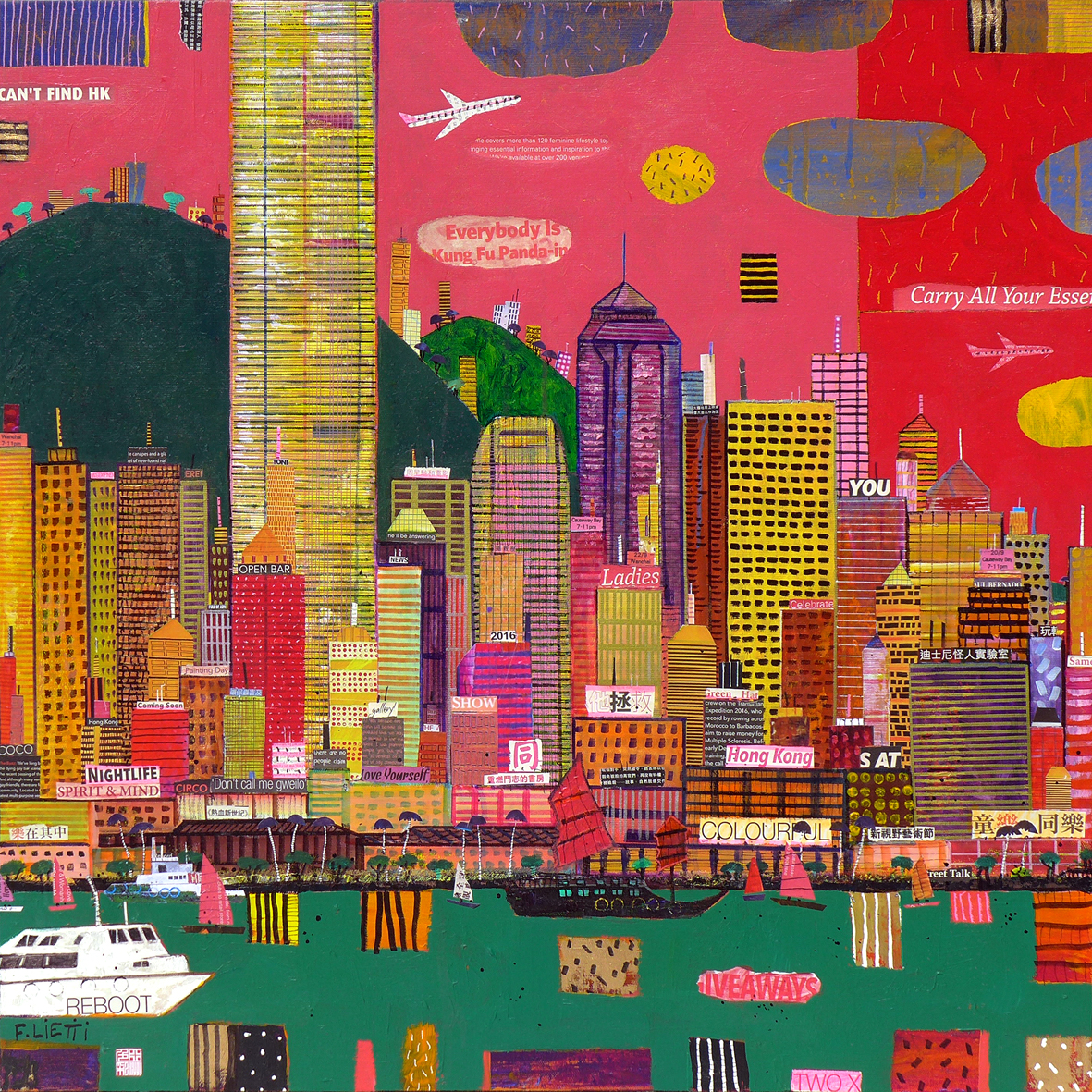
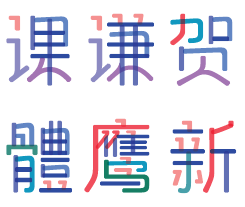 Shanghai, China-based type foundry, est. 2017, with a foreign office in Berlin. They specialize in multilingual and multiscriptual typography and type matching, in particular for Chinese, Latin, Cyrillic and Arabic. Their font catalog in 2020:
Shanghai, China-based type foundry, est. 2017, with a foreign office in Berlin. They specialize in multilingual and multiscriptual typography and type matching, in particular for Chinese, Latin, Cyrillic and Arabic. Their font catalog in 2020: 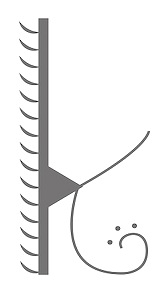 Kwai Chung, Hong Kong-based designer of the curly eyelash-style typeface Cranky (2014). [
Kwai Chung, Hong Kong-based designer of the curly eyelash-style typeface Cranky (2014). [ Angel's Chinese name is Tsz Yan Kwong. Graduate of
Angel's Chinese name is Tsz Yan Kwong. Graduate of  Archer Lai (Hong Kong, b. 1991) created the oriental simulation typeface
Archer Lai (Hong Kong, b. 1991) created the oriental simulation typeface 
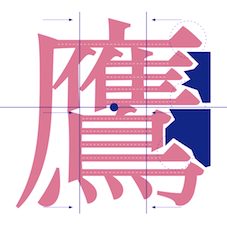 Type designer from Hong Kong who graduated from the
Type designer from Hong Kong who graduated from the 
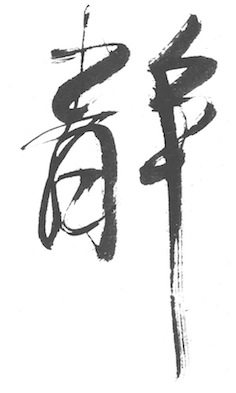 Aka Cho nami. Hong Kong-based designer of the silhouette font Dancer (2014). She also does Chinese lettering and calligraphy. [
Aka Cho nami. Hong Kong-based designer of the silhouette font Dancer (2014). She also does Chinese lettering and calligraphy. [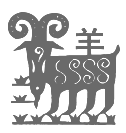 Mak Sui Shing (Hong Kong) created these freeware dingbat fonts in 2001-2002: CNg001, CNg002, CNg003, CNg004, CNg005, CNg009, ChopStick, DEMObeard, DEMObig5, DEMOcoins, DEMOflower, DEMOhorse, DEMOlantern, DEMOmusic, DEMOrose, DEMOstamp, DEMOsword, DEMOtree, DEMOwatch, DemoBun, DemoFood-2001, DemoXmas, cn12. Most of these fonts have Chinese symbols. He is working on
Mak Sui Shing (Hong Kong) created these freeware dingbat fonts in 2001-2002: CNg001, CNg002, CNg003, CNg004, CNg005, CNg009, ChopStick, DEMObeard, DEMObig5, DEMOcoins, DEMOflower, DEMOhorse, DEMOlantern, DEMOmusic, DEMOrose, DEMOstamp, DEMOsword, DEMOtree, DEMOwatch, DemoBun, DemoFood-2001, DemoXmas, cn12. Most of these fonts have Chinese symbols. He is working on 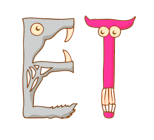 Tsuen Wan, Hong Kong-based designer of The Font of Monsters (2014).
Tsuen Wan, Hong Kong-based designer of The Font of Monsters (2014).  Hong Kong-based creator of the Chinese typeface
Hong Kong-based creator of the Chinese typeface 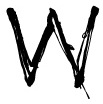 Free font site, est. 2009. The fonts being displayed and introduced were developed by students in seminars and workshops offered by
Free font site, est. 2009. The fonts being displayed and introduced were developed by students in seminars and workshops offered by  Hong Kong-based designer. His typeface Walk-On (2015) was originally created as a corporate typeface for fashion brand Wang & Lynch. Part art deco, part decorative didone, it is a prototypical fashion mag titling typeface.
Hong Kong-based designer. His typeface Walk-On (2015) was originally created as a corporate typeface for fashion brand Wang & Lynch. Part art deco, part decorative didone, it is a prototypical fashion mag titling typeface. 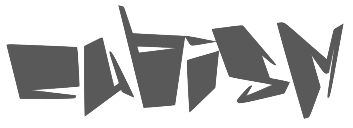 Graphics and Media Design student at the London College of Communication, who hails from Hong Kong.
Graphics and Media Design student at the London College of Communication, who hails from Hong Kong. 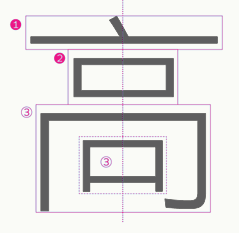 Julius Hui (Chinese name Hon Man Hui) is a type designer in Hong Kong who studied at Hong Kong Polytechnic University in the late 2000s. He worked for some time at the Hong Kong branch of Dalton Maag and at Monotype Hong Kong as type designer. When COVID broke out, he started his own foundry in Hong Kong. He designed these typefaces:
Julius Hui (Chinese name Hon Man Hui) is a type designer in Hong Kong who studied at Hong Kong Polytechnic University in the late 2000s. He worked for some time at the Hong Kong branch of Dalton Maag and at Monotype Hong Kong as type designer. When COVID broke out, he started his own foundry in Hong Kong. He designed these typefaces: 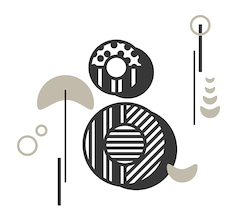 Graphic designer in Hong Kong who created the deco set of numbers simply called The Numbers (2016).
Graphic designer in Hong Kong who created the deco set of numbers simply called The Numbers (2016).  Kowloon, Hong Kong-based designer of the innovative triangle-based caps typeface Septa (2014). [
Kowloon, Hong Kong-based designer of the innovative triangle-based caps typeface Septa (2014). [ Based in Hong Kong, Kenneth Kwok is the Chief Designer and Director of The Creative Calligraphic Centre. He has been working on type design, particularly ideographic design from ca. 1970 until now. He designed many successful typefaces for Sha-Ken and Monotype Imaging such as ZhongYi, Elle, Ellan, and StiffHei.
Based in Hong Kong, Kenneth Kwok is the Chief Designer and Director of The Creative Calligraphic Centre. He has been working on type design, particularly ideographic design from ca. 1970 until now. He designed many successful typefaces for Sha-Ken and Monotype Imaging such as ZhongYi, Elle, Ellan, and StiffHei. 
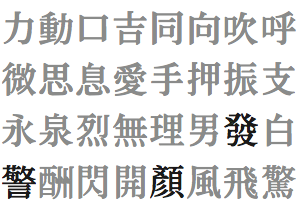 From her CV: Having lived and worked as a half-Japanese and half-German in Germany for a long time, the focus of my artworks was to create books about Japanese culture. The intention of writing and designing books about Japanese topics was to make German readers curious about the strange and foreign culture and to give them insights into it. In the last eleven years I have published six books talking about Japanese culture. Since 1998, I ran my own design office with a focus on corporate design, corporate publishing and catalogue design. Since 2002 I was teaching at several Universities in Germany. Moving to Hong Kong and teaching as an assistant professor at the Academy of Visual Arts of Hong Kong Baptist University (HKBU) since 2010 gives me new influences and inspiration for starting research projects focused on Chinese typography. My background of teaching typography as well as graphic design in Germany over eight years gives me the necessary background for starting a research project not only to learn more about my new cultural environment, but also to make the Hong Kong design culture more visible to international audiences.
From her CV: Having lived and worked as a half-Japanese and half-German in Germany for a long time, the focus of my artworks was to create books about Japanese culture. The intention of writing and designing books about Japanese topics was to make German readers curious about the strange and foreign culture and to give them insights into it. In the last eleven years I have published six books talking about Japanese culture. Since 1998, I ran my own design office with a focus on corporate design, corporate publishing and catalogue design. Since 2002 I was teaching at several Universities in Germany. Moving to Hong Kong and teaching as an assistant professor at the Academy of Visual Arts of Hong Kong Baptist University (HKBU) since 2010 gives me new influences and inspiration for starting research projects focused on Chinese typography. My background of teaching typography as well as graphic design in Germany over eight years gives me the necessary background for starting a research project not only to learn more about my new cultural environment, but also to make the Hong Kong design culture more visible to international audiences. 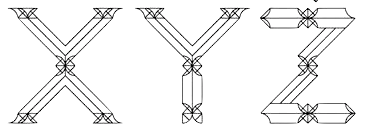 Neville Lam (Kowloon) created the ornamental caps typeface
Neville Lam (Kowloon) created the ornamental caps typeface  Hong Kong-based designer. A school project for an imaginary lifestyle store
Hong Kong-based designer. A school project for an imaginary lifestyle store 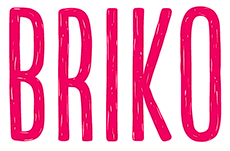 Nine Font is Paul Chen's type foundry in Tsim Sha Tsui, Hong Kong. In 2014, Paul Chen designed the condensed handcrafted sans typeface family Briko (+Ornaments, +Rough, +RoughOrnaments), the condensed sans typeface
Nine Font is Paul Chen's type foundry in Tsim Sha Tsui, Hong Kong. In 2014, Paul Chen designed the condensed handcrafted sans typeface family Briko (+Ornaments, +Rough, +RoughOrnaments), the condensed sans typeface 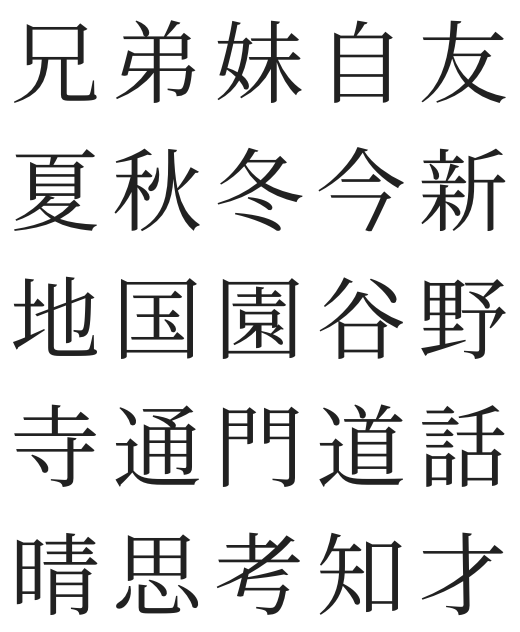 Noto Sans CJK and Noto Serif CJK are free typeface families developed at Adobe and Google to complement the universal Noto font package between 2014 and 2017.
Noto Sans CJK and Noto Serif CJK are free typeface families developed at Adobe and Google to complement the universal Noto font package between 2014 and 2017.  [
[ Type designer (b. Hong Kong, 1966) of the multiple stroke handwriting typeface
Type designer (b. Hong Kong, 1966) of the multiple stroke handwriting typeface 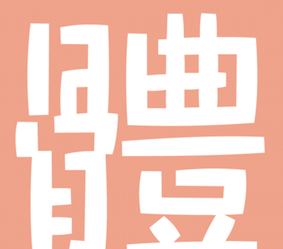 Robin Hui joined China Type Design / Monotype Hong Kong in 1988 as a type designer. As chief typographer and production manager, Hui managed China Type's type design team and was responsible for a variety of font projects. In 2006, China Type was acquired by Monotype.
Robin Hui joined China Type Design / Monotype Hong Kong in 1988 as a type designer. As chief typographer and production manager, Hui managed China Type's type design team and was responsible for a variety of font projects. In 2006, China Type was acquired by Monotype. 
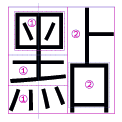 Chinese type designer who created the sans typeface
Chinese type designer who created the sans typeface 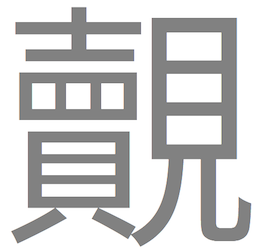 In July 2014, Adobe and Google jointly announced the publication of the free Asian typeface family Source Han Sans for Chinese (traditional (both Taiwan and Hong Kong) and simplified), Japanese, Korean, Greek, Cyrillic and Latin. This project, based on designs originally due to Ryoko Nishizuka, a senior Adobe designer in Tokyo, started in 2010. The fonts and original code are downloadable from
In July 2014, Adobe and Google jointly announced the publication of the free Asian typeface family Source Han Sans for Chinese (traditional (both Taiwan and Hong Kong) and simplified), Japanese, Korean, Greek, Cyrillic and Latin. This project, based on designs originally due to Ryoko Nishizuka, a senior Adobe designer in Tokyo, started in 2010. The fonts and original code are downloadable from 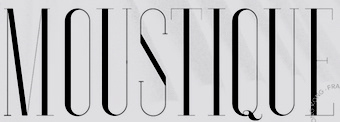 Hong Kong-based designer of the condensed fashion mag typeface Moustique (2019). [
Hong Kong-based designer of the condensed fashion mag typeface Moustique (2019). [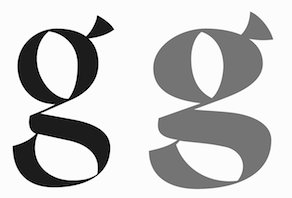 Designer in Hong Kong. At
Designer in Hong Kong. At  Toto Ng (b. 1993, Hong Kong) studied in Seattle in 2014.
Toto Ng (b. 1993, Hong Kong) studied in Seattle in 2014.  XMind is a mind mapping software company set up by Brian Sun in Hong Kong. In 2019, XMind released a
XMind is a mind mapping software company set up by Brian Sun in Hong Kong. In 2019, XMind released a